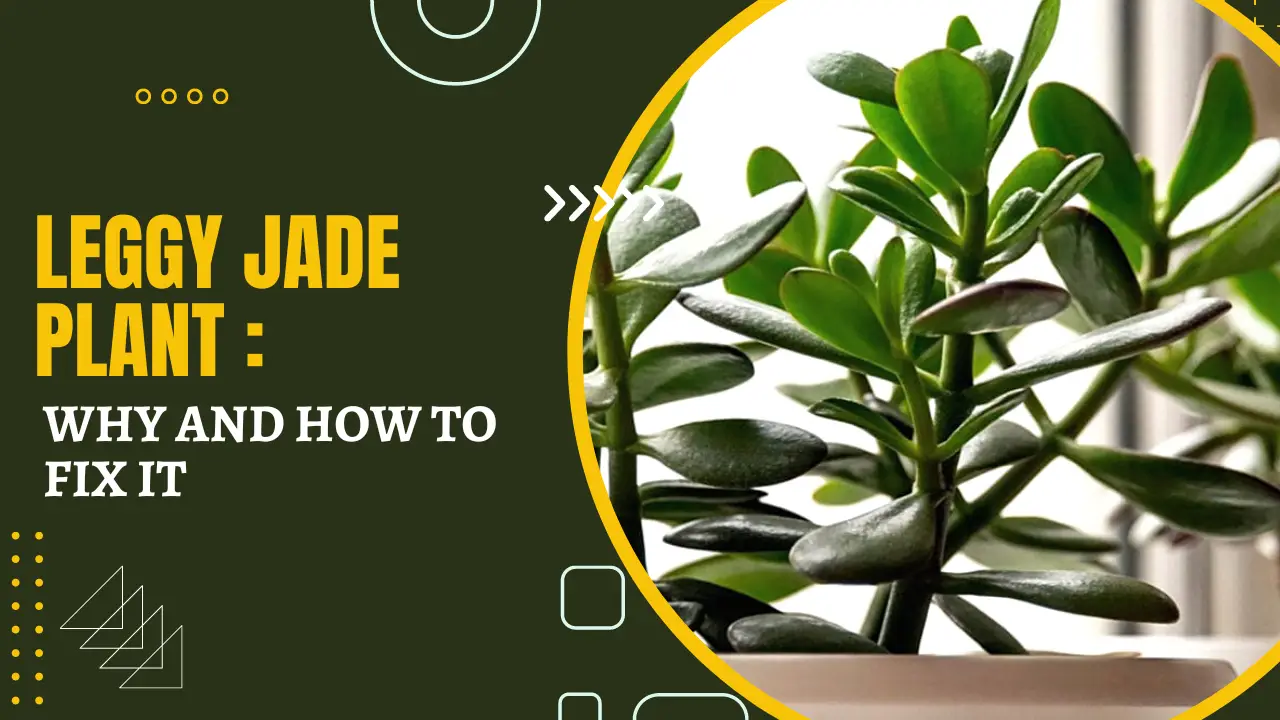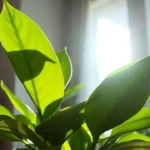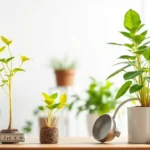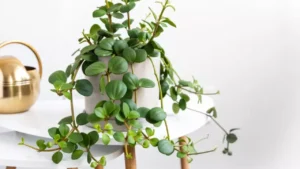Do you know jade plants are one the easiest indoor plants? These are low on maintenance and keep new plant parents happy.
Although they make excellent houseplants, they can become stretchy and leggy if not given the proper growing conditions. You need to give special care to its needs to ensure that it becomes healthy and happy and stays that way!
“But how to fix a leggy jade plant? What causes a jade plant leggy one?” If all these questions concern you, don’t worry. We are here to help you with the same. Before that, let’s examine the issues a leggy jade can encounter.
Table of Contents
What issues can a Leggy Jade Plant face?
When the jade plant grows leggy, it may cause severe effects:
- The plant is not dense and bushy as it used to be.
- The leggy jade plant degrades the aesthetics of your home.
- It may also lower your morale because all of your efforts are now “useless.” Even if you gave the plant plenty of nutrients and water, it still shows signs of lack of sunlight.
- Leggy leaves may block new growth.
- It also causes red edges or red tints on the leaves.
- Leaves may become dull and lose their shine.
- The plant slows its growth to concentrate on etiolation.
But do you know why your jade plant is leggy? What could be the thing you are missing out on?
Why is Jade Plant Leggy?
As you know, sunlight is necessary for healthy and consistent plant growth. It helps in development and reproduction.
Sunlight aids in the process of photosynthesis, which produces energy for the plant. Some plants and trees prefer to grow in areas with the least light. On the other hand, some wither and turn yellow, while others thrive sickly or simply dry up and die.
But when it comes to jade plants, they adore sunlight. When there is inadequate light, the nodes between the leaves stretch or elongate more than usual.
Your plant may look skinny and unhealthy rather than compact and full. You can also witness stem thinning and a lightening of the plant’s green color. It is primarily due to etiolation, a phenomenon caused by a lack of sunlight.
Now that you know that you have a leggy jade plant, let’s understand how to fix it. No, you won’t be doing the heavy work to save your plant; a few instructions will do the rest.
How to fix a Leggy Jade Plant?
Fixing a leggy jade plant is easier when you detect the symptoms sooner. It gives you an upper hand, and your plant will revive quickly.
1) Sufficient Light
The main reason your jade plant becomes leggy is that it does not get enough sunlight. Usually, this is the primary cause.
Determine how much light your jade plant gets throughout the day and whether or not the window gets any shade. Many people underestimate how much sunlight a particular location receives. Once you’ve determined which window gets the most light, relocate your jade plant there.
You must ensure that your jade plant receives the necessary sunlight and does not become leggy. Your jade plant requires 4-6 hours of bright light daily.
Note:
- When moving it closer to the window, avoid touching the glass. It may harm the leaves.
- The distance between your jade plant and the window significantly impacts the amount of light it receives.
- When compared to being right on the window, moving a plant 2 to 3 feet away from a window reduces the amount of light it receives by half.
Artificial Light
If you live in an area with little sunlight, the best thing you can do is provide your plant with artificial sunlight. Or, if you live in an apartment or a house where your plants do not get enough sunlight, you may need to supplement with artificial light.
You can use LED or fluorescent lighting if you want your plant to grow healthily. Artificial light will help your jade plant grow and keep it from becoming leggy.
When using artificial lights, a good option is to use two light bulbs. One is a light cool white bulb, and the other is for jade plants only. These will provide your jade plant with a full spectrum of light.
2) Temperature
If you have sufficient light for your little green friend and are still stumbling upon “How to fix a leggy jade plant,” the temperature might be the one to blame. You should also consider the temperature at which jade is kept. If you are placing your jade plant outdoors, it may catch a cold at night.
In winter, less sunlight reaches the plant because the days become shorter. Because of the reduced exposure to sunlight, frost may harm the plant.
It is also possible that your plant is in a room where the temperature is unstable and the amount of sunlight is high. It will result in slower growth of your plant’s leaf and shorter nodes.
3) Humidity
You should reduce the high humidity and avoid a regular water supply to prevent the leggy jade plant. To avoid excessive humidity, you should also pay attention to controlling the humidity of the surrounding air. You should not spray water on the jade plant’s leaves.
4) Pruning
One of the best ways to avoid a leggy jade plant is to prune it. You can clip down the overgrown sections and leggy branches. It also improves the look of the jade plant.
Choose leaves that are thin and sickly in size or appearance. The leaves of the jade plant are succulent, and the slender stems may be unable to support the thick leaves.
Note:
- While pruning the affected stems or leaves, make sure not to damage other parts of the plant.
- I do not suggest you prune jade plants less than a year old.
- You should also consider pruning the plant in the spring or summer when it is actively growing to replace the lost leaves.
How to Prune your Leggy Jade Plant?
Pruning a leggy jade plant is simple, especially if your green friend is still tiny.
Your goal should be to cut the longest and most slender branches. Further, you can also pinch out the shortest ones. If your jade plant is leggy, you may need to repeat this process every other week.
Many gardeners like you and me often get scared to prune their plants, but it is the only way to eliminate a jade plant leggy problem. You can prune your jade plant in the spring or early summer. As the plant is in active growth, new ones will quickly replace the leaves you cut.
Here you will understand how to prune your leggy jade plant step by step:
Step 1: Start examining your jade plant’s longest and most slender branches.
Step 2: Now cut the length of the longest branches to the same size as the other medium-sized branches.
Step 3: Clip away all the droopy and curved stems. If the stems are long and droopy, you must cut them first.
Step 4: You must now remove the baby leaves every few inches.
Now that you know all the ways to fix jade plant leggy problem, how about preventing it from happening? You can quickly stop your jade plant from becoming leggy than dealing with the effect once it happens.
How to Prevent a Leggy Jade Plant in the future?
1) Sunlight
As I have mentioned earlier, the jade plant requires a lot of sunlight to grow. If the light is insufficient, it will interfere with average growth and cause leggy’s disease.
If this is the cause of the leggy jade plant, you should move it to a brighter location to ensure good lighting conditions and promote plant recovery.
2) Correct Temperature
Jade plants thrive in normal indoor conditions, with daytime temperatures ranging from 18 to 24°C and nighttime temperatures ranging from 10 to 12°C. If temperatures drop below that, jade plants will stop growing.
Cooler temperatures generally encourage slower, more compact growth. Your jade plant may barely survive when combined with high light levels, resulting in a really compact, bushy plant.
4) Proper Water
Adequate watering is one of the necessities for any plant to stay healthy and happy! It is why you must ensure that your plant receives adequate watering, so it does not miss out on nutrients.
However, jade plants enjoy adequate watering, but overdoing can cause root rot at the base.
If you overwater your plant regularly, you will notice that the roots become thinner, and the foliage turns yellow. When you water your jade plant, always check the soil. Make sure the jade plant’s soil is a bit dry. You can skip a few watering during the winter when the plant is in the dormant stage.
Put your jade plant in a pot with drainage holes, so the water doesn’t sit in one spot for too long.
5) Fertilizer
You should provide your plant with ample organic feed in the growing season. But make sure excess nitrogen fertilizer application will also result in a leggy jade plant. You must control fertilization and avoid using highly concentrated fertilizer.
Conclusion
A leggy jade plant can be a serious concern, and you may need to take a few care precautions. You may need to prune stretched stems and allow new leaves to grow. Pinch off the growing tip of stems as well.
If you want to avoid the jade plant leggy problem, make sure to give this plant plenty of sunlight. If you don’t have access to a lot of sunlight because of where you live, you’ll need to use artificial light to encourage the growth of this plant.
Let us know if you have any more questions and we will get back to you.
FAQs
Q1. What is the best way to keep a jade plant upright?
You can keep the jade plant upright by the following steps:
1. Using a support rod, you can keep your jade plant upright.
2. Start by inserting a length of dowel rod into your pot.
3. It should be about an inch away from the trunk.
4. The stake should be about 4 inches taller than the plant.
5. You can use flexible plant ties to secure the main trunk to the support.
6. Take care not to knock off any leaves while tying.
Q2. Can I make a new jade plant from the parent plant?
These little beauties are so adorable that you simply must have more of them. Yes, you can propagate new jade plants by cutting from the existing ones.
Over time, jade plant division can result in a healthy new plant using a single leaf. Separating jade plants will not harm them and will provide you with more low-maintenance succulents.
Q3. Why are my jade plant’s leaves falling off?
Jade leaves may fall prematurely due to excessive wetness or dryness, a lack of nitrogen in the soil, or a need for more sunlight. Mealybugs may frequently attack this succulent.
Q4. How can I make my plant bushier?
Jade plants are among the most popular plants in the world. They are lovely plants that come in a variety of colors, and gardeners like to make them bushy for a more appealing appearance.
One method is to attach branches directly to the center stalk of your jade plant using wire or silk thread. It will allow it to grow more evenly and steadily. If you want your jade to grow faster, you can fertilize it with organic matter every 2-3 weeks.
Q5. Why are the branches of my jade plant drooping?
There are a few possible causes for drooping jade branches.
One possibility is that the soil around the tree has become compacted over time. Putting stress on the roots eventually causes the branches to lose vigor. You can solve this problem by aerating the soil around your jade tree several times yearly with a blower or an air pump.
Lack of water is another possible cause of droopy jade branches. Water your jade plant adequately. Although, be careful, do not make the soil too soggy.












